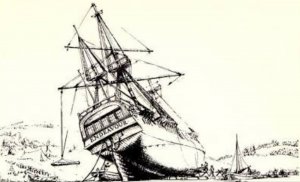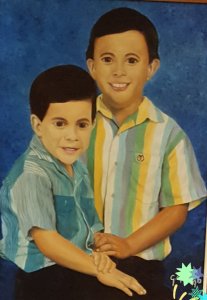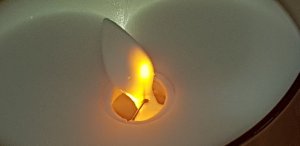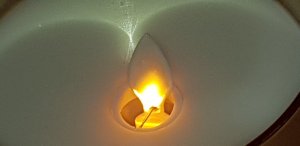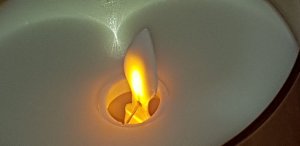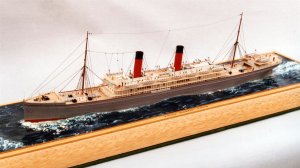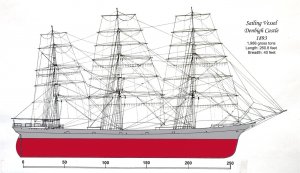More information regarding the beaching of the HMS ENDEAVOUR at Cape Tribulation, Queensland.
James Cook’s hundred days in Queensland
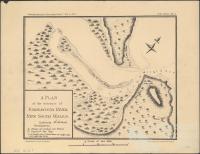
Entrance Endeavour River,
New South Wales, 1770
By:
Paul Turnbull
Cook began sailing northwards along the Queensland coast in mid-May 1770. He had fulfilled the main aims of his first Pacific voyage aboard HMS
Endeavour. He had successfully observed the transit of Venus at Tahiti as instructed by the Admiralty, then sailed to latitude 40°, from where
Endeavour had tracked westwards across the southern Pacific, in the hope of discovering ‘a Continent or Land of great extent’ that reports by earlier Spanish and Dutch voyagers suggested lay in the southern Pacific. Should he not find this new continent, Cook had been ordered by the Admiralty to break off his search on reaching the east coast of New Zealand. He was then to head for England with his precious observations of the Venusian transit after surveying as much as could safely be done of New Zealand’s coastline and off-shore waters.
Homewards east or west
The Admiralty left Cook to decide his route back to England. Returning by Cape Horn on the southerly tip of South America had the advantage of allowing a second search for the continent that at this time was plausibly but mistakenly thought to exist in the southern Pacific; but Cook and his officers agreed that the
Endeavourwas in no condition to withstand the rigors of again sailing across the Pacific. Prevailing winds meant they would be forced to track southwards into high latitudes through stormy winter seas. Setting out westwards directly for Cape Town in South Africa posed the same danger, with no promise of new discoveries. However, by this time Cook ‘...had other more greater objects in view…’. He put to his officers that returning to England by way of the East Indies and the Cape of Good Hope was not only the most sensible option, but would allow them to investigate Australia’s eastern coast. What they encountered would set events in motion resulting in British occupation of Australia.
Surveying and scientific inquiry
Tracking northwards along the Queensland coast, Cook oversaw the drawing of land views and sea charts that were to prove invaluable to later marine surveyors. He also followed his usual practice of tying readings of longitude and latitude to distinctive coastal features, enabling their clear recognition by future voyagers. Many names of coastal places long familiar to Queenslanders owe to Cook’s wanting to alert those who came after him to navigational dangers - as, for example, in his naming the headland on the north shore of the Tweed River ‘Point Danger’ because of the shoals in adjacent waters. Other names Cook bestowed on landmarks with nearby water or food sources, or places requiring too much time or risk investigating. The Glasshouse Mountains that rise up sharply from the coastal plain were so named by Cook because of their resemblance to English glass houses of his time and his belief on observing the colour of the sea that a large river estuary lay close to these remarkable volcanic plugs. Queensland coastal features with lesser navigational significance often gained names flattering sponsors of the voyage and other influential figures in British naval and government circles. Present-day Hervey Bay was named in honour of John Hervey (1724-99), an aristocrat and naval officer who was appointed a Lord of the Admiralty in 1771. Moreton Bay was named after the Earl of Morton (1702-68), then President of the Royal Society, Britain’s leading scientific society.
Cook’s first Pacific voyage was distinctive in that the
Endeavourcarried a well-equipped party of naturalists and artists financed and led by Joseph Banks (1743-1820). Queensland’s coast and offshore islands provided opportunities for Banks to oversee the collecting of many species of plant and animal life previously unknown to European science. However, Banks was often obliged to hide his frustration at Cook’s not allowing him more time ashore beyond what was required to take on fresh water and firewood. Given the state of
Endeavour’s hull and masts after so long a voyage, Cook was keen to reach the Dutch colonial port of Batavia as soon as possible. He was also aware that the morale of his crew was deteriorating. Off Bustard Bay, Cook’s clerk lost the tips of his ears cut off in a drunken assault. Even so, in the time he got ashore, Banks still managed to collect a remarkable number of specimens. Today 200 of the plants he gathered as the
Endeavour sailed northwards can be seen in the Queensland Herbarium.
Dangers and remarkable occurrences
For four weeks Cook’s northward journey of discovery went well. But after passing Cape Tribulation on 10 June 1770 the
Endeavourwas forced to sound a narrow path through submerged coral reefs. ‘Here began all our troubles’, Cook wrote in his journal. Within twenty-four hours the vessel struck a reef and stuck fast with the hull punctured. Water entered as fast as the ship’s pumps could clear it. Cook had
Endeavour lightened by throwing over cannon and other heavy items. A sail was quickly stitched across with rope fibres, coated with tar, straw and whatever else to hand could render it more waterproof. On the next high tide the sail was drawn under the ship covering the holed timbers. Incredibly, a large piece of coral wedged in the hole enabled the vessel to reach the nearest river estuary where the hull could be repaired. Cook was to name this refuge Endeavour River.
Cook’s seven weeks ashore at Endeavour River enabled Banks and his assistants to explore the neighboring country, resulting in further discoveries, notably remarkable creatures they described as being of a mouse-like colour the size of the greyhound (young grey kangaroos). Cook now had no reservations about Banks investigating the local flora, hoping he might locate plants that would prevent disease and malnutrition until the ship was repaired and they reached Batavia. Cook in fact experimented by eating what was found, which could have had fatal consequences when he and several others ate the poisonous seeds of a species of Cycad.
The most remarkable occurrence during the voyagers’ stay at Endeavour River was their encountering the Guugu Yimithirr people. Guugu Yimithirr were wary of the strangers from the sea. Cook sought peaceable interaction by offering gifts and food, which enabled the voyagers to record some of the Guugu Yimithirr language and be the first Europeans to learn the name of an Indigenous person, a man called Yaparico. However, the refusal of Cook’s men to share caught turtle effectively ended contact. Guugu Yimithirr men outraged by the theft of turtle fired the grass around the voyagers’ camp, which led to one Guugu Yimithirr man being wounded by gunshot. During Cook’s last two weeks ashore, the people of the land kept well away from the sea-borne strangers.
Cook left Endeavour River on 5 August 1770 to round Cape York for Batavia after a further seventeen days sailing in unpredictable conditions and avoiding submerged coral reefs. Yet he was to track across the Torres Strait confident of having seen and visited places no European had yet gone that could now be claimed for possession by the British Crown.
Happymodeling
Greg





